How Animals Adapted To Live Under The Ocean
What Animals Live In Antarctica?
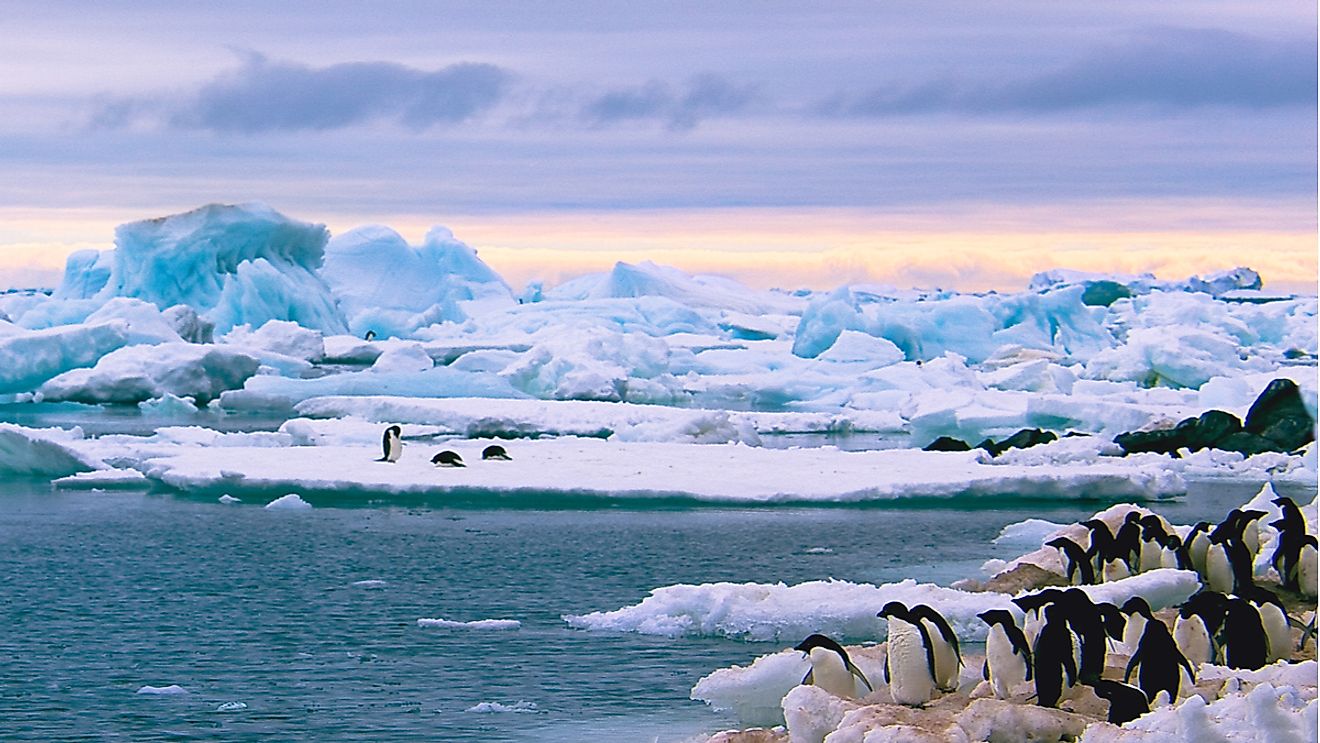
- Adelie penguins are known to dive 575 anxiety (175 thousand) into the water to catch their food.
- The largest brute on world, the blue whale, feeds nigh exclusively on krill, tiny shrimps living in the ocean.
- The jumbo squid has the largest eye out of all creatures on Earth.
Despite having some of the harshest cold climatic patterns on the planet, Antarctica abounds with gems of wildlife unique to its ecosystem. These animals are well adapted to survive this extreme weather condition and reproduce vibrantly therein. A lack of human development on the frozen continent as well facilitates the prosperity of Antarctic wild fauna. Global warming and other climate change factors, however, are increasingly taking their toll.
Antarctic Prion
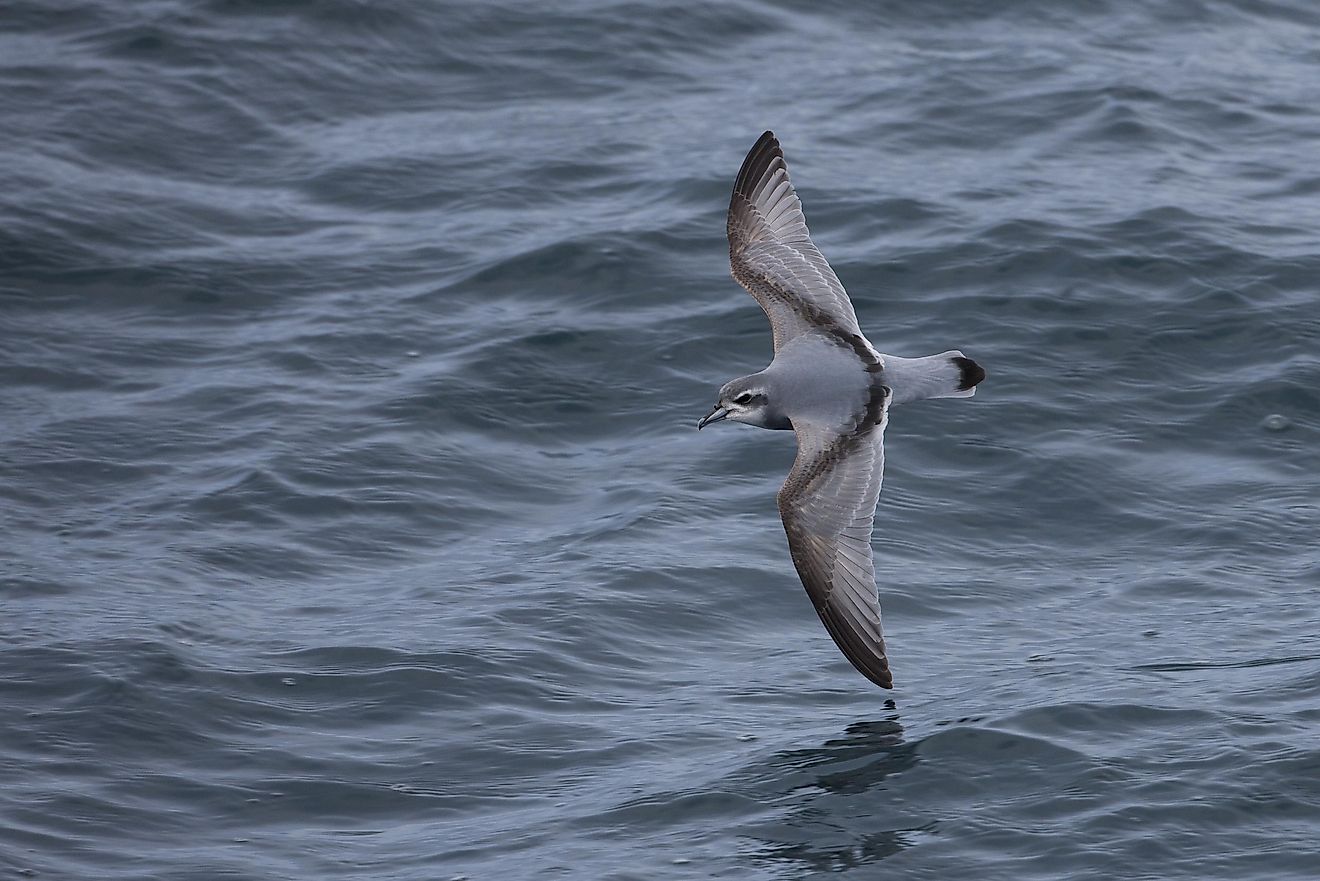
Also called the dove prion, the Antarctic prion is a seabird whose feathers and upper torso are grayish blue, and the underbelly from the throat to the tail plumage is generally white. Its bill is low-cal gray and curved on the tip, while the forehead is rounded and legs black. The Antarctic prion has a wingspan of 31.v to 36 inches (80 to 91 cm), weighs 1 lb (440 grams), and the body length is 14 to 16.5 inches (35 to 42 cm). Its populations are distributed on Antarctic continent, and peri-Antarctic islands like South Sandwich, Southward Orkney, Southward Shetland, Macquarie, Auckland, Heard, Crozet, and Kerguelen.
Antarctic prions are social and live in flocks of thousands on those islands. Crustaceans like krill, tiny cephalopods, small fish, polychaete worms, and carrion are role of the Antarctic prion diet. To feed, it flies along the water surface with its bill and caput submerged in water to scoop up their nutrient. To reproduce, the Antarctic prion lays one egg in December which is incubated for 45 days by both the male and female. 45 to 55 days subsequently hatching, the fledglings go out to grow independently. The Antarctic prion has a lifespan of xv to 20 years.
Orca (Killer Whale)
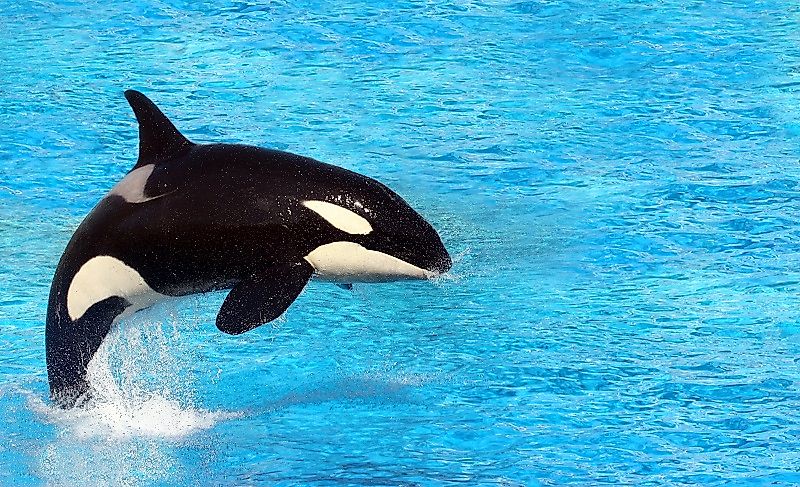
The orca, also called a killer whale, is a cannibal ocean mammal, and the largest member of the dolphin family. A male'south maximum length is 32 feet (nine.8 grand), and a female 28 feet (8.five m). The orca has iv-inch teeth which is not surprising when considering it is virtually the size of a minibus! A male orca weighs xi tons (ten,000 kg), and a female person 8.25 tons (7,500 kg). It has a huge black body, white underbelly, a white patch above and behind the eye, and a grey saddle patch, behind the dorsal fin.
The orca'due south diet consists of seals, sea lions and birds, turtles, sharks, squid, whales, and fish. The habitat for the orca are oceans with common cold water in Antarctica, Norway, Alaska, the N Atlantic, and Pacific Oceans. The lifespan of the orca is 50 to fourscore years. Orcas are social and travel in groups chosen pods with 5 to thirty of them or more. Female orcas pb these pods. Orcas can also swim at speeds of up to 33.5 miles (54 km) per hour.
Adelie Penguin
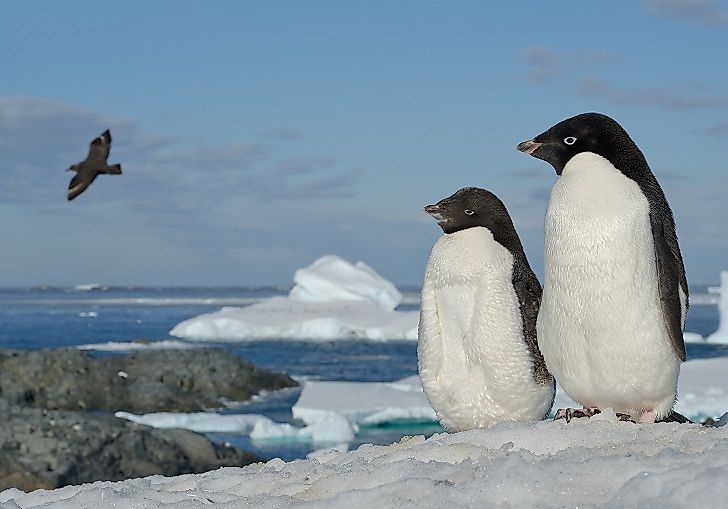
The Adelie penguin is a migratory bird named after the wife of French Antarctic explorer Dumont d'Urville. Its populations are spread across the Antarctic continent, and such southern islands as Southward Shetland, S Orkney, South Sandwich, and Bouvetoya. A male Adelie penguin weighs 12 lbs (v.4 kg), and a female person 10.5 lbs (4.7 kg). Adult trunk lengths reach nigh 27.5 inches (seventy cm). At total maturity, the Adelie penguin has a black head, with white rings around each centre and a carmine pecker. Its back is black with blue-tipped feathers; the chest is solid white, and the feet are grey-pink.
The Adelie penguin'south primary nutrition is made upward of krill, small fish, squids, amphipods, and cephalopods. To get nutrient, it is known to dive 575 anxiety (175 1000) into the h2o, and information technology is an adept swimmer. Adelie penguins are social and brood in colonies numbering in the thousands, in nested depressions on the ground lined with small-scale stones to protect eggs from water. They volition sometimes steal nesting rocks from other nests. Both male person and female Adelie penguins have turns incubating the eggs. Sexual maturity begins from iii to 6 years, and an Adelie penguin can alive on average 20 years in the wild.
Sea Cucumber
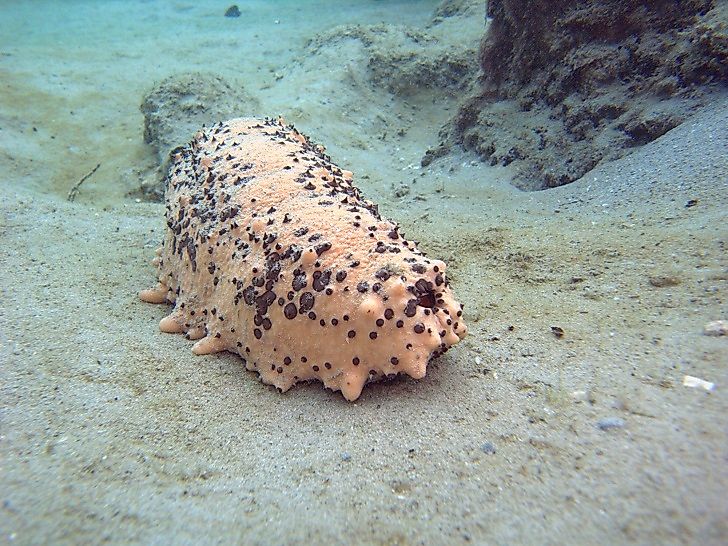
The sea cucumber is an echinoderm, meaning information technology is office of a large family of marine invertebrates. Its body is shaped similar a cucumber with small tentacle-like tube feet for movement and feeding. Depending on the species, the sea cucumber can exist carmine, nighttime green, or black. Its length varies from less than an inch to over 6 feet (2.5 to 182 cm). The sea cucumber usually lives on or in the seafloor and is therefore regarded as the body of water'south earthworm. Other planktonic sea cucumber species float in the h2o and move with currents.
It scavenges and feeds on algae, aquatic invertebrates, and body of water waste particles, recycling them back to the ocean like an earthworm. Sea cucumbers are institute in nearly all marine ecosystems on the planet. A sea cucumber exhibits sexual and asexual traits: females release eggs into the h2o, and they get fertilized on coming into contact with sperms released by males. For this reproduction to work, many males and females demand to be together at 1 location. A sea cucumber lives v to ten years. When threatened, it discharges gluey threads to trap its enemies or fifty-fifty mutilates its own trunk by detaching body parts. The missing parts afterwards regenerate.
Rotifers
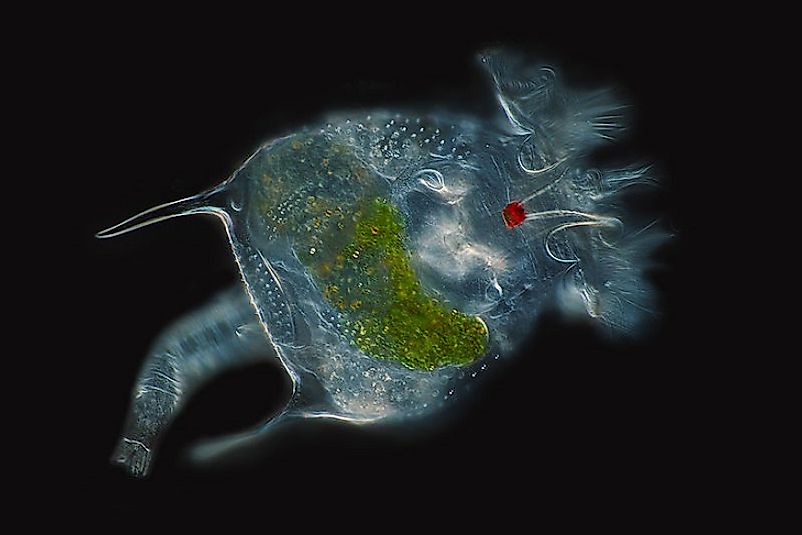
Rotifers are tiny microscopic zooplanktons that thrive on moist soils, freshwater, brackish waters and marine environments. At that place are about 2,000 rotifers species and their size more often than not ranges from 0.1 to i mm, though some reach 2 to iii mm. They feed on microalgae and are food for fish, shellfish, corals and other aquatic organisms. Due to their loftier reproductive rates and nutritional importance, rotifers are used in aquaculture and aquariums.
Some rotifers pb a solitary lifestyle and others alive in agile colonies. Rotifers live besides in lake bottoms, rivers, and streams, sewage treatment plants, and even grow on freshwater crustaceans. Antarctica's native rotifer is the rusty cerise Philodina gregaria. During summertime, it is found in large quantities in ocean bottoms and pools.
Bluish Whale
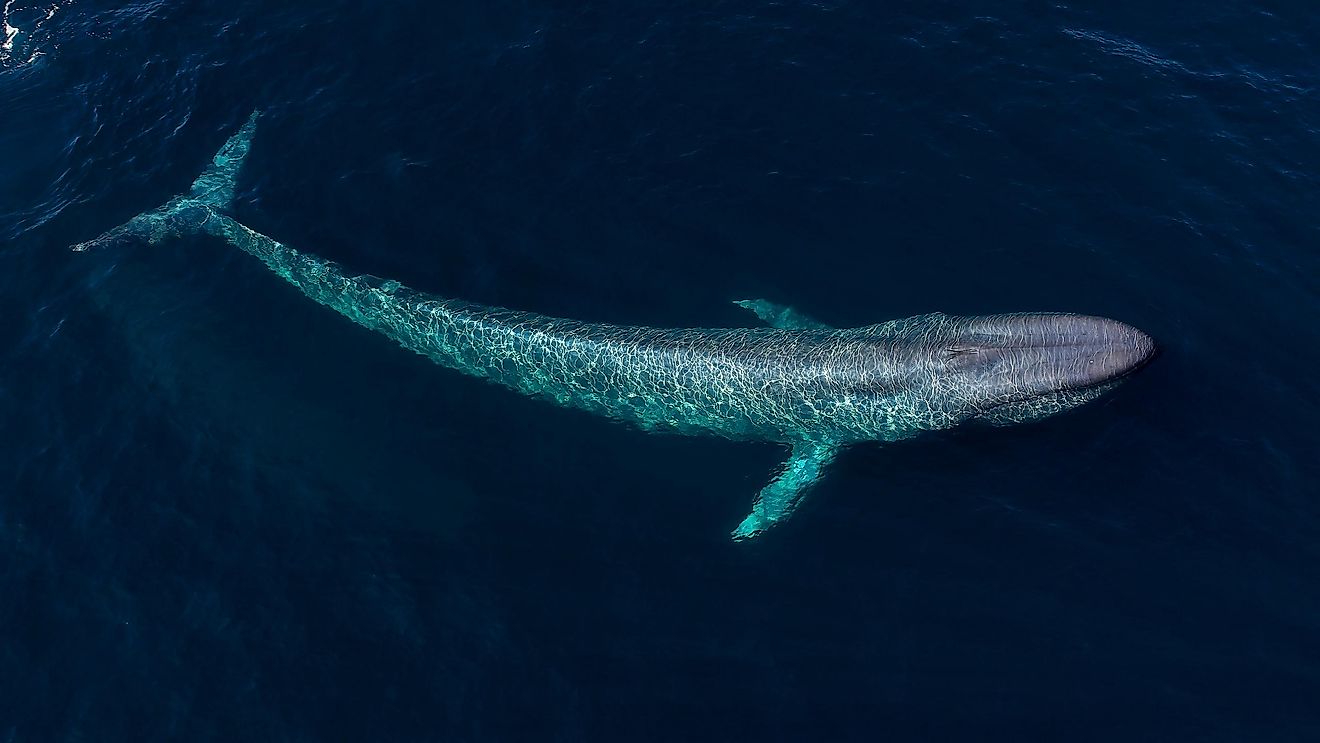
As the largest animals on earth, the bluish whale's main nutrition is krill, a crustacean and ane of the tiniest aquatic creatures. Daily, a blueish whale eats ii to 4 tons of it. Also called the Antarctic blue whale, a male's length is 95 anxiety (29 1000) and a female is 108 feet (33 m), while a young calf is 23 anxiety (vii m) long. A male blue whale weighs 165 tons (150,000 kg), and a female 200 tons (180,000 kg). Its broad, U-shaped caput makes up to a quarter of its body'south length, and information technology has a streamlined torso dotted with pale bluish spots on its back. Its belly colour is stake, merely it looks yellow due to an algae layer. It has two blowholes that, when exhaling, spew water sprays up to 30 feet (ix thousand) into the air.
Blue whales are plant in the North Pacific, Atlantic, and Southern and Northern Indian Ocean. They sometimes swim in pocket-size groups, but usually alone or in pairs. During summertime they spend time feeding in polar waters and so they migrate towards the equator at the onset of winter. A blue whale swims at 5 miles (8km) an hour merely when agitated can reach upward to twenty miles (32 km) an hour. Blue whales are the loudest animals in the world. In at-home conditions, they hear each other's groans, pulses, and moans up to i,000 miles (i,600 km) abroad. A blue whale's sexual maturity starts at 6 to 10 years, and its average lifespan is 80 to 90 years in the body of water. The International Union for the Conservation of Nature (IUCN) classifies the bluish whale equally an endangered species. It is estimated that there are between 10,000 and 25,000 blue whales remaining. Fortunately, their population trends appear to exist increasing.
Snowfall Petrel
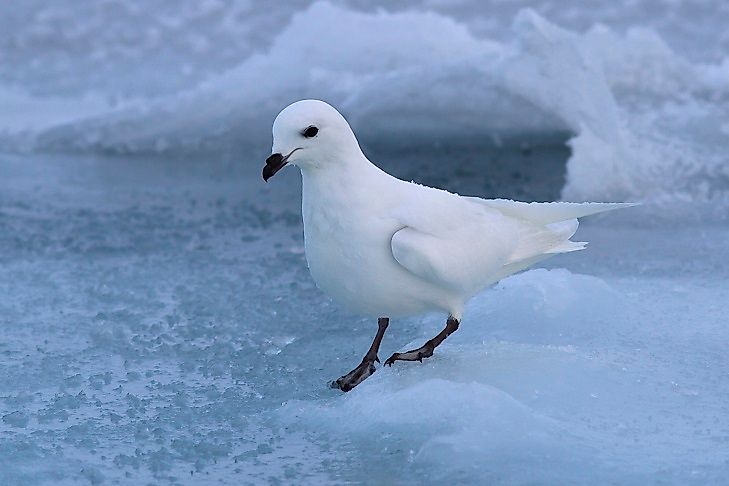
The snow petrel is a petrel subspecies that is all white with dark eyes, a blackness bill, and bluish-grey anxiety. This bird is native to the cold, icy Antarctic continent. Its weight range is 0.v to 1 lb (260 to 460 grand), and its length is 12 to xvi inches (30 to 40 cm) with a wingspan of 30 to 37.five (75 to 95 cm). Fish, squid, mollusks, krill, as well as carrion of seals, whales and penguins, are part of the snowfall petrel's nutrition.
Snow petrel populations are mostly in the Antarctic continent and peri-Antarctic islands, as well as South Georgia, Bouvetoya, Due south Sandwich, and South Orkney Islands, where they nest on cliffs as colonies. To avoid predators like the south polar skua, a snow petrel flies low over the water or very high over the country. Snow petrels are sociable and fly erratically in a bat-like motility. A snowfall petrel can squirt foul-smelling oils with its oral fissure at intruders, and it can also fight them with its bills and wings. The snow petrel can live for upwards to 20 years and their boilerplate age of sexual maturity is 7 years.
Colossal Squid
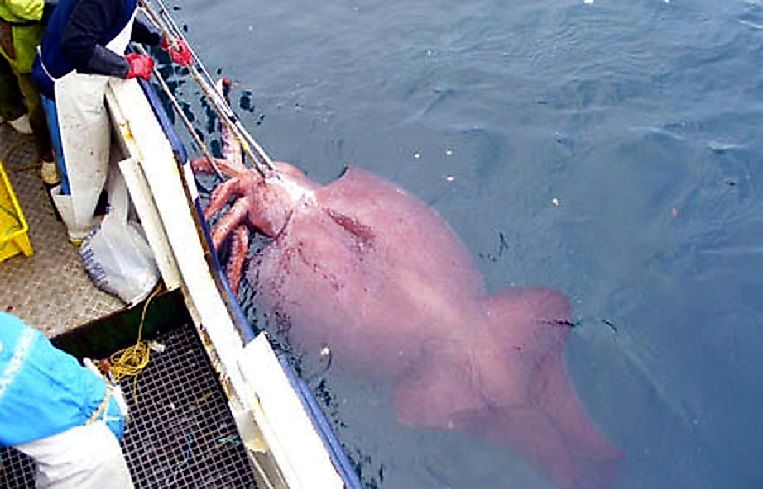
The jumbo squid is a large deep-sea predator whose body length and tentacles combined mensurate up to 46 feet (14 k), and it weighs near i,100 lbs (500 kg). It has eight arms measuring 2.75 to 3.75 feet (0.85 to i.15 m), and two tentacles virtually seven anxiety (2.1 k) long. The colossal squid has rotating hooks that grab and hold prey at the end of each tentacle.
Its diet consists of fish similar the Patagonian molar-fish and other squids. The jumbo squid's skin is reddish-pink, and the eyes are larger than those of whatsoever other beast on the planet. A male squid is smaller than a female. The deep oceans of Antarctica and the southwest Pacific around New Zealand is where the colossal squid is found. It lives 1,000 anxiety (300 m) beneath the surface. Researchers believe the colossal quid leads a solitary lifestyle and eats large amounts of food. It is known to fight off the predatory sperm whales that casualty on it.
Leopard Seal
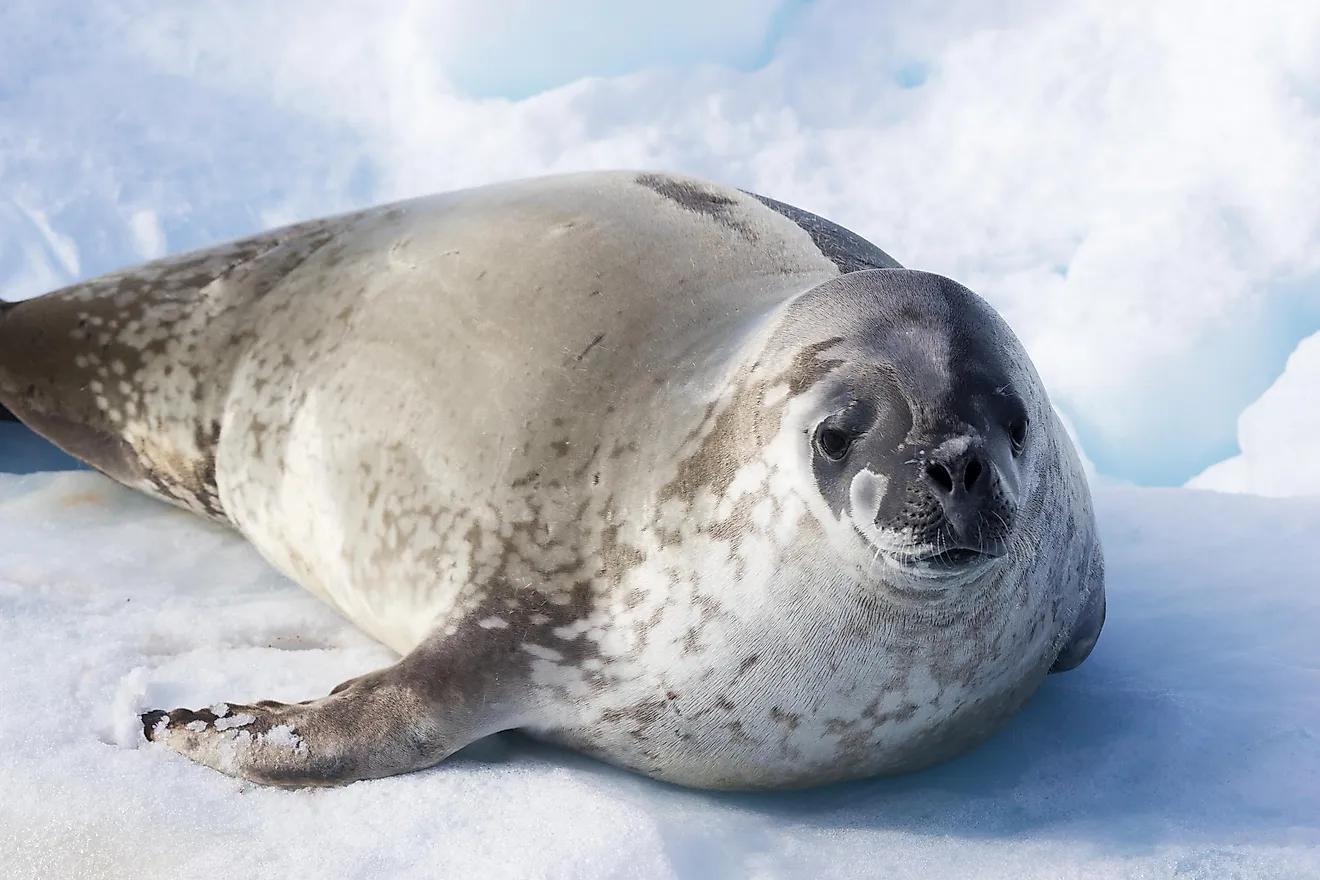
The leopard seal is an aquatic, ambitious carnivorous mammal institute in the Antarctic continent coast and sub-Antarctic islands, as well as on the coats of Southward Africa, South America, Australia and New Zealand. A male person leopard seal weighs upward to 660 lbs (300 kg), and a female up to 1,100 lbs (500 kg). The torso length of a male person leopard seal is between 9 and 109 feet (2.viii to 3.3 thou), and a female ix.5 to 12.v anxiety (2.ix to 3.8 k). At full maturity, its coat is silvery-gray to black with patchy dark spots and a pale underbelly. It has forepart flippers for pond. A leopard seal's caput is large, with a long flexible cervix, and a jaw with long canine teeth.
Its nutrition consists of small seals, krill, penguins, seabirds. Information technology preys on them by hiding under the ice, and its dives underwater last up to fifteen minutes. A leopard seal leads a solitary life, or can exist institute in pairs or smaller groups. A female person achieves sexual maturity at four years and a male leopard seal at four.five years. The boilerplate lifespan of a leopard seal is 12 to 15 years in the wild, simply some have lived for up to 26 years. The orca is the only known leopard seal predator.
Emperor Penguin
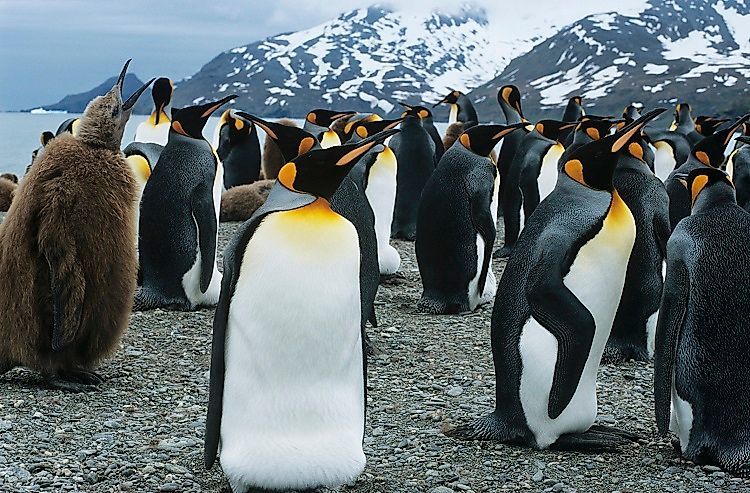
The emperor penguin is the largest of about 17 penguin species documented. At full maturity, it stands at 3.75 feet (one.15 thousand) and weighs up to 88 pounds (40 kg). The emperor penguin has yellow ear patches that fade into the white of its breast feathers and underbelly. Feathers on its dorsum and fly-like appendages are gray-black. The emperor penguin's main nutrition is fabricated up of cephalopods, fish, and krill. In a twenty-four hours, the emperor penguin can swallow 4.iv to 6.vi lbs (2 to 3 kg) of food, just when it needs to fatten up to breed, it eats upward to 13 lbs (half-dozen kg).
Emperor penguin populations are scattered all over the Antarctic continent, and they range from a few hundred to over 20,000 pairs. To survive the harsh freezing katabatic winds reaching up to 125 miles (200 km) an hour, males huddle closely together to keep warm as they incubate the eggs, every bit this reduces heat loss by upward to 50 percent. Male emperor penguins achieve sexual maturity at 5 years and females at vi. Their boilerplate lifespan is 15 to 20 years only some have lived over forty years.
Source: https://www.worldatlas.com/articles/what-animals-live-in-antarctica.html
Posted by: hunsuckermilitaidele1997.blogspot.com

0 Response to "How Animals Adapted To Live Under The Ocean"
Post a Comment